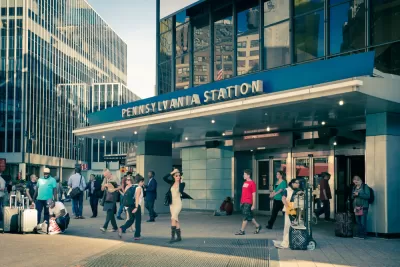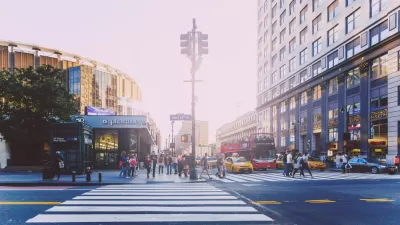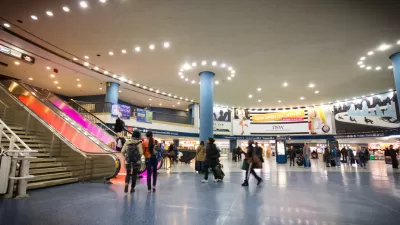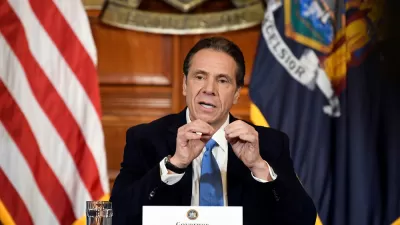Empire State Redevelopment unanimously voted to support the planned redevelopment of Midtown Manhattan’s much-maligned Penn Station.

New York City’s economic development agency has approved a plan for the redevelopment of Penn Station and surrounding area, reports Kristine Klein in The Architect’s Newspaper. “Under the approved plan most of the new constructions in the so-called Empire Station Complex will be dedicated to commercial space, including offices and retail, spread across 10 skyscrapers to form an office-centric neighborhood on par with nearby Hudson Yards. The plan also includes 1,800 housing units, a hotel, and a long-overdue renovation to Penn Station, recently dubbed a ‘hellhole’ by [New York governor Kathy] Hochul.”
“The proposed reconstruction of Penn Station will include cosmetic upgrades, the reconfiguration of the train hall serving NJ Transit and Long Island Rail Road, subway improvements, and the construction of a rail tunnel under the Hudson River, all estimated to cost $7 billion, with the surrounding redevelopment proposal increasing the cost another $13 billion.” The project will connect to the new Moynihan Train Hall.
According to the article, “With the ESD’s approval an application can now be made for federal funding to assist with the costs of the project’s development. However, who will dish out the money for the megaproject is still not confirmed.” Neither is a design: “The ESD has not released a Request for Proposals (RFP) for the larger design scheme; last month the State formally commenced an RFP seeking architecture and engineering firms to execute the outlined design work at Penn Station.”
After a design is finalized, the project will need to be approved by the Public Authorities Control Board and, if a state bill introduced last June passes, undergo the city’s Uniform Land Use Review Procedure (ULURP).
FULL STORY: Empire State Development board approves overhaul for Penn Station and its circumambient neighborhood

Study: Maui’s Plan to Convert Vacation Rentals to Long-Term Housing Could Cause Nearly $1 Billion Economic Loss
The plan would reduce visitor accommodation by 25,% resulting in 1,900 jobs lost.

North Texas Transit Leaders Tout Benefits of TOD for Growing Region
At a summit focused on transit-oriented development, policymakers discussed how North Texas’ expanded light rail system can serve as a tool for economic growth.

Using Old Oil and Gas Wells for Green Energy Storage
Penn State researchers have found that repurposing abandoned oil and gas wells for geothermal-assisted compressed-air energy storage can boost efficiency, reduce environmental risks, and support clean energy and job transitions.

Santa Barbara Could Build Housing on County Land
County supervisors moved forward a proposal to build workforce housing on two county-owned parcels.

San Mateo Formally Opposes Freeway Project
The city council will send a letter to Caltrans urging the agency to reconsider a plan to expand the 101 through the city of San Mateo.

A Bronx Community Fights to Have its Voice Heard
After organizing and giving input for decades, the community around the Kingsbridge Armory might actually see it redeveloped — and they want to continue to have a say in how it goes.
Urban Design for Planners 1: Software Tools
This six-course series explores essential urban design concepts using open source software and equips planners with the tools they need to participate fully in the urban design process.
Planning for Universal Design
Learn the tools for implementing Universal Design in planning regulations.
Ascent Environmental
Borough of Carlisle
Institute for Housing and Urban Development Studies (IHS)
City of Grandview
Harvard GSD Executive Education
Toledo-Lucas County Plan Commissions
Salt Lake City
NYU Wagner Graduate School of Public Service





























